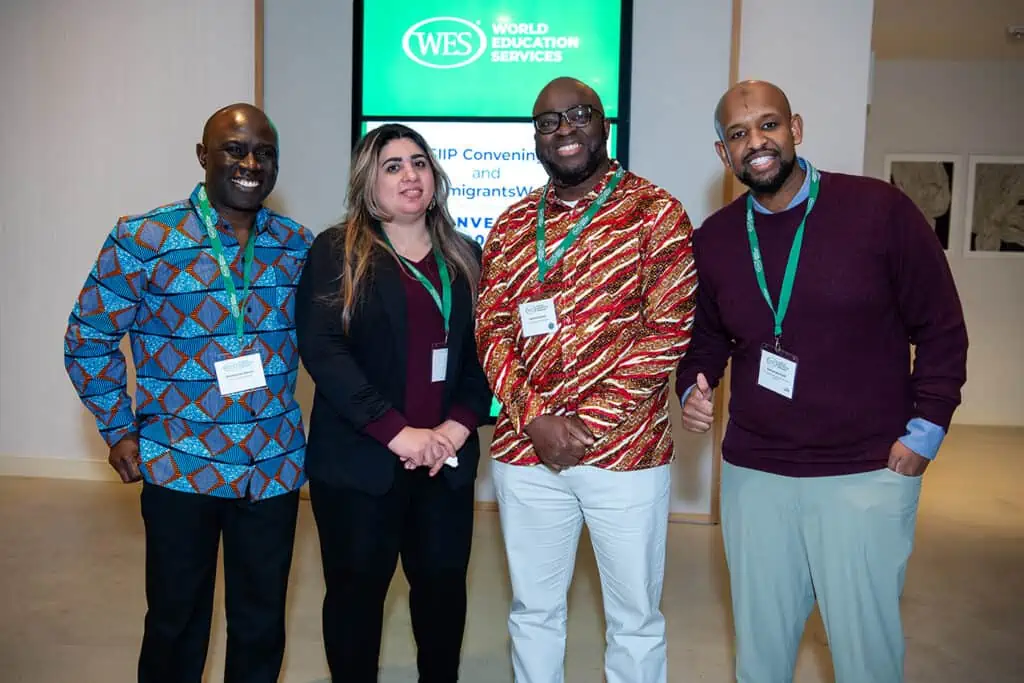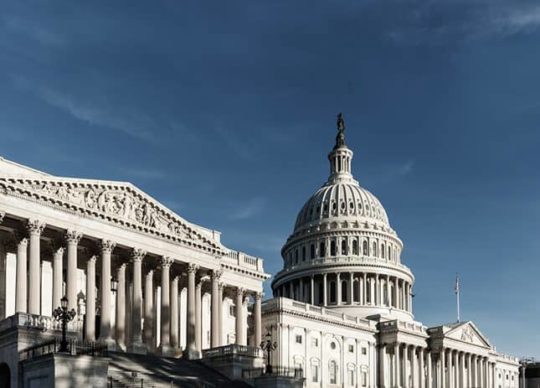State Policy Priorities for 2024: Promoting the Career Mobility and Economic Advancement of Immigrants and Refugees
In 2023, states across the country passed legislation to advance the economic and career mobility of immigrants and refugees (the recent WES 2023 State Policy Report highlights these reforms). During 2024 state legislative sessions, policymakers have renewed opportunities to propose measures that bolster state economic interests and the economic mobility of immigrants and refugees.
Labor shortages continue to deepen across the United States. Meanwhile, immigrants and refugees with education, experience, and credentials are ready to contribute their much-needed skills and training to the workforce. Yet systemic barriers leave an estimated two million college-educated immigrants and refugees unemployed and underemployed, to the detriment of local economies that as a result forgo approximately $40 billion in forgone wages and $10 billion in unrealized taxes annually. Many more immigrants and refugees face barriers to the higher education required to fill positions in critical sectors like health care and education—employment which could help their communities thrive.
Additionally, state efforts to foster immigrant and refugee inclusion are often impeded by having to coordinate between multiple departments and agencies that are responsible for policy and program development and service delivery. Policy reforms addressing these issues can help immigrants and refugees access employment in sectors with workforce shortages, advancing their economic mobility and in turn helping states meet immediate workforce needs and bolster long-term economic vitality.
WES offers five policy priorities for 2024 that can serve as a roadmap for states to promote effective reforms:
Priority 1: Create pathways to practice for internationally trained immigrants and refugees.
Some of the most critical workforce shortages in the U.S. are in professions that require post-secondary education, such as teaching, engineering, and many health care careers. As of 2022, 44 percent of public schools reported one or more unfilled teaching positions, with the greatest impact felt in schools with high percentages of minority students and those living in poverty. More than 100 million Americans currently lack sufficient access to a primary care physician, with an anticipated total shortfall of 37,800 to 124,000 physicians by 2034; and as of 2020, more than one-fifth of all nurses planned to retire by 2025, with nursing program enrollment insufficient to offset those losses; and many allied and behavioral health professions project similar shortages.
At the same time, 165,000 immigrants and refugees with undergraduate health-related degrees from other countries are impeded from fully contributing to the workforce, as are the more than 100,000 individuals with teaching degrees from abroad. In many states and sectors, before they are allowed to practice in the U.S., these qualified workers are required to repeat costly and time-consuming training that they have already completed in another country.
States should pass policy reforms establishing standards and procedures for recognizing credentials earned abroad, and creating accessible pathways to internationally trained workers’ full, unrestricted licensure.
Priority 2: Reduce onerous or unnecessarily restrictive barriers to licensure.
Immigrants and refugees face a range of barriers to attaining professional licensure in the U.S. Some barriers are broad and impact a range of professions, such as requirements regarding immigration status, Social Security numbers, or individual taxpayer identification numbers; or a lack of official guidance or resources for navigating the licensure process. Other barriers are career specific, like the requirement that teaching licensure candidates pass a standardized test that has been found to be culturally biased, or limitations on which English language proficiency exams are accepted for nursing licensure. Professional licensing boards in numerous states and fields also require that credential evaluations be obtained either from a specific provider, or from one of a short list of approved agencies.
Internationally trained physicians face a series of career-specific barriers to licensure. Not only are they required to repeat medical residency in the U.S., but they are also statistically less likely than U.S.-trained medical graduates to obtain a residency match, and in many states they are also required to complete a longer term of residency than their U.S.-trained counterparts. Many residency programs also require that candidates complete a period of U.S.-based clinical experience before applying, or give preference to those who do, while such clinical experience opportunities are very limited.
States should implement reforms that lower barriers to licensure, including removing requirements regarding immigration status, Social Security numbers, or individual taxpayer identification numbers; providing clear and accessible licensure guidance; increasing testing and credential evaluation options and flexibility in assessment methods; and addressing barriers that are specific to careers in critical sectors, such as establishing clinical training programs or medical residencies for international medical graduates, or creating parity between residency requirements for international medical graduates and graduates trained in the U.S.
Priority 3: Identify barriers and solutions to workforce advancement for immigrants and refugees.
Before barriers can be addressed, they must be identified. The most pressing issues will vary from one state to the next, as will the most effective solutions. Commissions, task forces, or work groups can tackle these questions either by studying immigrant and refugee workforce integration broadly, or by examining sector-specific issues. A wider view might encompass immigrant and refugee participation in adult education and the workforce, and the barriers impeding the economic mobility of these workers; while a more focused mandate might look at a critical field, such as medicine or education. Findings can then inform the development of future legislation to advance immigrant and refugee inclusion in state workforces, to alleviate worker shortages.
States should determine priority areas to investigate, and establish commissions, task forces, or work groups to gather information, identify barriers to immigrant and refugee workforce integration, and make policy recommendations for addressing those barriers.
Priority 4: Strengthen workforces and build inclusive communities by establishing state offices to support immigrant and refugee success.
Immigrants and refugees contribute valuable training and skills to local workforces, yet many states lack an effective way to foster state-level, cross-sector immigrant and refugee inclusion initiatives. State Offices of New Americans (ONAs) serve as a central hub to facilitate the coordination of services, outreach to service providers, and development of policies aimed at promoting social, cultural, and economic inclusion.
A number of states have already established such offices; and together with the American Immigration Council, WES hosts a growing Office of New Americans State Network to support the work of existing ONAs and immigration policy staff in 19 states across the country. ONAs liaise between government departments and agencies, foster partnerships with stakeholders such as local governments, educational institutions, non-profit organizations, local employers, and immigrant communities themselves, and make recommendations to policymakers. They work to ensure that immigrants and refugees have meaningful access to resources, programming, and services that support their success.
States should establish ONAs to improve coordination and efficiency of program planning and service delivery, and to develop and promote a statewide strategy for driving transformative policies and programs that support immigrant and refugee inclusion.
Priority 5: Expand access to affordable higher education to people who have experienced forced migration.
Refugees, asylees, asylum seekers, and individuals with other humanitarian relief statuses, such as Special Immigrant Visa (SIV) holders, face exceptional difficulties in starting or continuing their higher education in the U.S. One significant challenge is the cost of higher education coupled with the inaccessibility of in-state tuition or financial aid to those who are unable to meet standard residency requirements. A number of states have enacted laws classifying refugees, asylees, and SIV holders as residents for the purposes of tuition fees at their state’s public colleges and universities. Despite this progress, a 2022 review of in-state tuition laws in all 50 states found that some categories of displaced individuals—namely asylum seekers and those with humanitarian parole or temporary protected status—are rarely included in these reforms. Because higher education leads to greater success in the workforce and increased earnings, equitable access to education is key to supporting economic mobility for all displaced students in the U.S.
States should reform residency laws to classify refugees, asylees, and individuals who hold humanitarian visas as residents for the purposes of tuition and financial aid at public post-secondary educational institutions. Residency for these purposes should also be extended to asylum seekers and those with humanitarian parole or temporary protected status.
Policies lowering barriers to economic and career mobility are vital to addressing labor shortages and bolstering healthy local economies. States should prioritize the development of policies that will allow all immigrants and refugees to contribute their full potential to the workforce.





